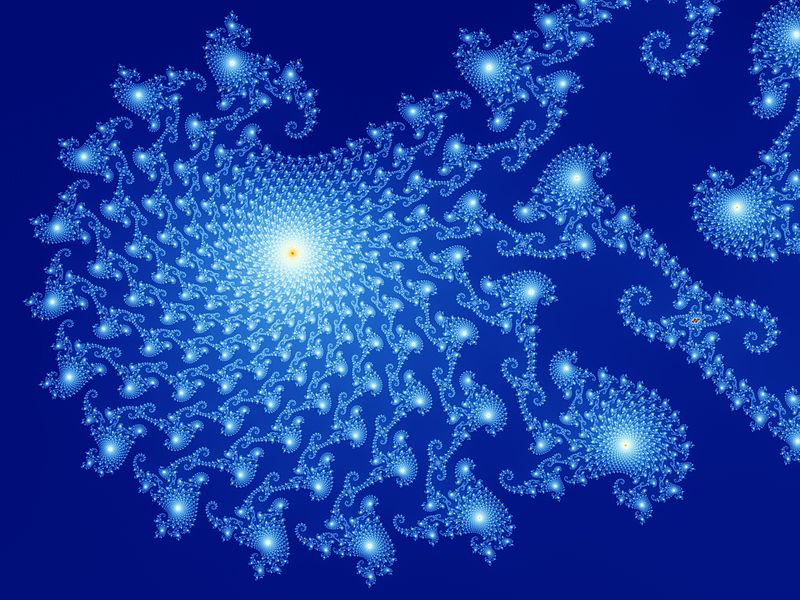 Fractals are infinitely complex and beautiful patterns produced through the repetition of a simple formula or shape, patterns which often appear rough or chaotic and which can be found everywhere in nature (the surface of the sea, the edge of a cloud, the dancing flames in a wood fire). I have written about them briefly before.
Fractals are infinitely complex and beautiful patterns produced through the repetition of a simple formula or shape, patterns which often appear rough or chaotic and which can be found everywhere in nature (the surface of the sea, the edge of a cloud, the dancing flames in a wood fire). I have written about them briefly before.What appeals to us in such patterns, perhaps, is the combination of simplicity and complexity. They allow our minds scope to expand, and our imaginations to take off in the direction of the infinite, but at the same time to rest in a unity. It is similar to the reason we love science. Scientists are seeking the simple secret at the heart of the complex - the formula or combination of universal laws that governs all of reality and explains why it works or appears the way it does.
Something similar is happening in art, when the artist seeks unity of concept or meaning or mood in a complex scene or sight or landscape.
Not all beauty is produced by these "recursive algorithms" or the repetition of self-similarity at different scales of magnitude. Sometimes a pattern is just there in the thing and does not repeat itself. But beauty always has something to do with order, which means the finding of a unity of form in something complex - a balance between the Many and the One. The finding of unity gives us joy (which is why we call it beautiful) because it enables us to recognise the Self in the Other, outside ourselves. It causes us to expand our boundaries to include the other thing as grasped and understood, or at least as situated in a relationship to us. Fractal patterns are a version of that experience. We sense the unity, but because it is expressing itself as never-ending complexity, it never gets boring.
Therefore all beauty, including fractal beauty, reminds us of God, who is both infinitely simple (in himself, as pure love) and yet infinitely complex (in what he contains and creates).
